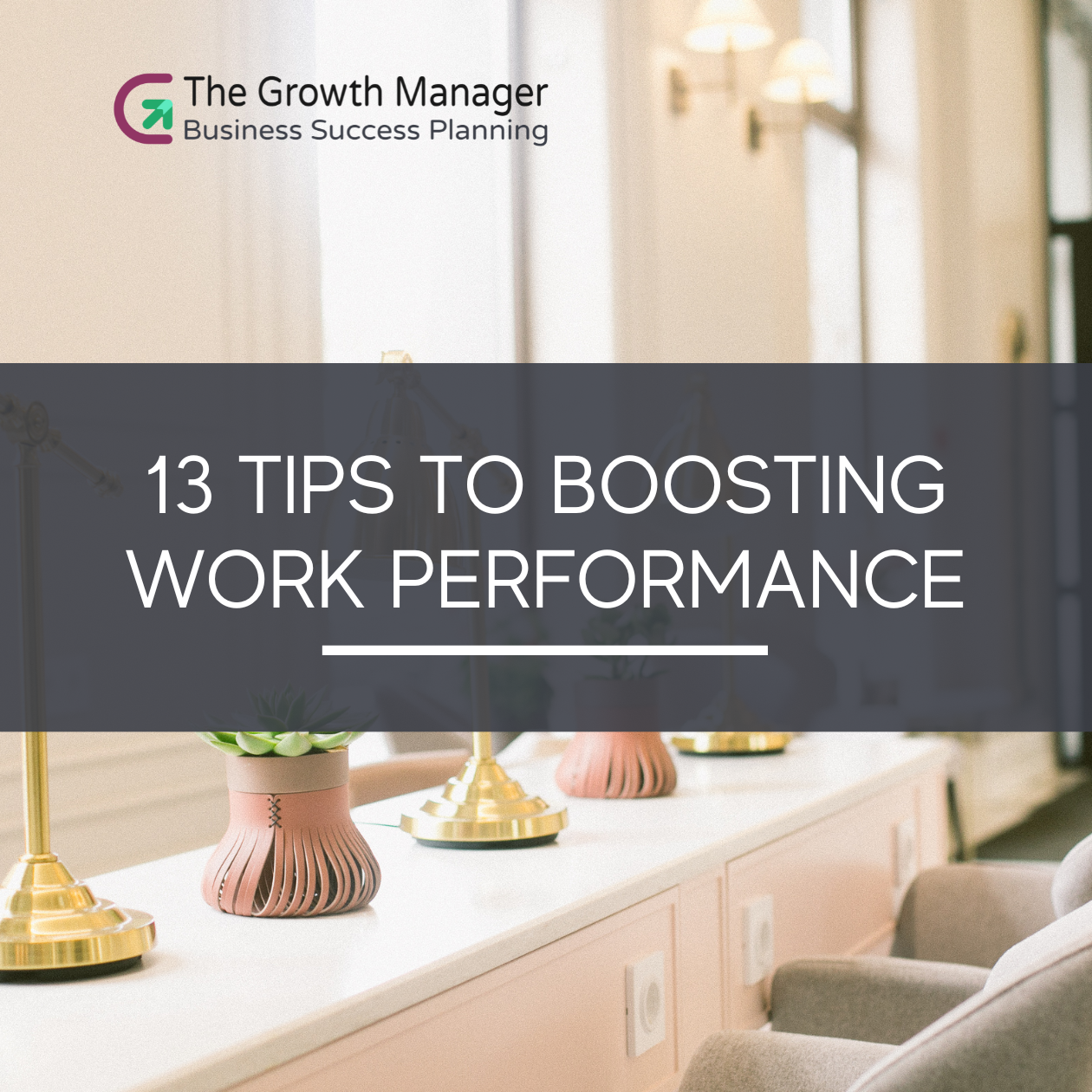Have you ever felt demotivated to work? Like everything’s just exhausting. You wake up every day not wanting to log in to work until you realise your workload is already piling up. This causes you to procrastinate and rush everything at the last minute. It’s a mean cycle that you can get out of easily.
You’ve probably tried looking for ways to motivate yourself to work again. But the thing is, it’s hard to work on something if you don’t know what the problem is. The worst part is that you might’ve tried solutions that weren’t fit for the issue you have.
Perhaps you’re reading this blog because you’ve experienced something similar or want to boost your productivity at work.
In our previous blog, we talked about how we can foster a healthy and productive digital workspace. Now, we’ll talk about how you can increase your work performance to enhance your team’s efficiency and effectiveness.
Nowadays, we must recognise the importance of boosting work performance. But the tricky part is figuring out exactly how to achieve that.
But don’t worry. We have not one, not two, or even five tips for you. This article has a whopping 13 tips to help you boost work performance in a remote setting!
 But why is it essential to boost your productivity?
But why is it essential to boost your productivity?
The answer to this question is quite obvious—we know! But there might be more to what meets the eye.
Aside from efficiency, boosting productivity at work has a ripple effect on other facets of your business. Here’s what we mean by that:
The more productive an employee is, the more engaged they will be at work. This can show up in many different ways. For instance, a team member might bring more creative ideas. Or perhaps you’ll notice them working on tasks beyond their job descriptions. If not those two, maybe they’ll take the initiative in non-work activities like event organising.
Small actions like these are sometimes a HUGE sign that your team member is highly engaged at work. And we now know that highly engaged individuals are also highly productive at work. These two—productivity and individual engagement, are known to be intertwined.
So picture this: deadlines at work are being met effortlessly, team members are collaborating seamlessly, and the overall business thrives because everyone is operating at their best.
High work performance doesn’t just translate to the business’s success. It also fuels personal growth, career advancement, and a sense of accomplishment among your team members.
However, the question remains: How exactly do we boost productivity in the workplace?
Here are 13 Productivity Tips to Achieve That:
1. Set Clear Goals
As you can imagine, working on something is very difficult if you don’t know the goal. Imagine sitting down at your desk every Monday, with each goal having a precise goal stated: generate 50 qualified leads by Friday or increase email CTR by 5%. You’ll know exactly what you aim for because you follow the SMART framework: Specific, Measurable, Achievable, Relevant, and Time-bound.
Without precise goal setting, your workdays tend to feel aimless. But with them, every task gains its purpose.
2. Prioritise Tasks
Your workdays often look like a mountain of tasks. Instead of being paralysed, we suggest you create a system: highlight the three most critical tasks for the day and tackle them first.
Using methods like the Eisenhower Matrix, which includes categorising tasks into urgent and vital, you focus on what matters first.
Prioritisation turns chaos into clarity, ensuring no energy is wasted on low-value work.
3. Master Time Management
Successful entrepreneurs and executives swear by the Pomodoro Technique—and we do, too! This method is simple: 25 minutes of intense focus, followed by a five-minute break.
Another excellent method to achieve deep work is time blocking in the morning, safeguarding this time from meetings or emails. These methods aren’t just “quick hacks,” they’re lifelines in managing time effectively.
You must find your rhythm and watch how much more you can accomplish daily.
4. Keep Away from Distractions
As a marketer or entrepreneur, getting into the zone and blocking out distractions is key. A few ways to do this are blocking out chatter, putting your phone on “Do Not Disturb,” and spending quality minutes getting lost in your craft.
By eliminating distractions, you’ll be able to create better-quality work that your clients will be happy with. The takeaway? A distraction-free environment can help your productivity flourish.
5. Proper Use of Technology
Staying on top of your tasks is vital to get ahead of the game. One way to do this is by adequately utilising technology to your advantage. At this point, you probably already know that technology can make or break your productivity flow.
So here’s how you can utilise technology properly: instead of juggling spreadsheets and emails, rely on project management tools like ClickUp or Trello to centralise tasks, timelines, and updates.
For communication, we recommend platforms like Slack to keep conversations streamlined. The right technology will not only save you time but will also prevent burnout by simplifying workflows.
6. Know When To Take a Break
Imagine spending hours working on marketing projects, drafting proposals, and even writing blog posts. If you’re working nonstop around the clock, then it’s easier for you to get burnt out.
Instead, we recommend you step outside for some fresh air every 90 minutes. When you return, your mind feels sharper, and your creativity flows again.
Taking a break should not be treated as a downtime. They’re fuel for your mental engine that prevents you from getting fatigued. Incorporate them wisely and see the difference in your output.
7. Learn How To Delegate Effectively
A good leader knows they can’t handle everything alone. This is why you must assign tasks to different team members to leverage the team’s strengths.
Through delegation, you would be surprised that you’ll be able to accomplish twice as much in half the time. Delegating work isn’t about offloading—it’s more about building efficiency through effective collaboration.
8. Continuous Learning
Marketing trends are constantly evolving. This means that the market’s needs are continually changing too. For you to be able to keep up, you must align your efforts with the current trends and adjust your strategy accordingly.
But this isn’t possible without learning. Continuous learning is non-negotiable in today’s evolving world. Courses, webinars, and even daily reading can help sharpen your skills and keep you ahead of the curve.
Just imagine: you can attend a workshop on persuasive pitching techniques today, and then you’ll see your closing rate skyrocket the next month. Talk about real and tangible results!
9. Maintaining Work-Life Balance
When you log off at work, you must close off those tabs in your brain that also lead back to work. After a long day of working hard, you can spend the evening jogging around your neighbourhood, having dinner with your partner, or even a quick coffee catch-up with your friends.
Your work does not define you. So please don’t feel bad for having time off work when it’s time to log off. Balancing professional responsibilities with personal life will help you prevent burnout and sustain long-term productivity.
You’re not just a worker in front of a screen. You’re a person, too. So have fun after work!
10. Foster a Positive Work Environment
Happiness is contagious. So imagine an online team meeting filled with laughter, mutual respect, and constructive feedback.
A recent study showed that happier workers tend to be the most productive. So make sure you invest in finding ways to keep the people on your team happy. But a positive work environment doesn’t happen accidentally. It’s made through conscious efforts.
Creating a welcoming space, regular check-ins, and ensuring everyone feels included are just some things you can do to foster a positive workplace. You will feel the positive energy, and your team will feel it, too.
J.W. Marriott Jr. once said, “Take care of your employees, and they’ll take care of your customers.”
11. Reviewing Performance
Monitoring progress lets you stay aligned with your goals and switch strategies if needed.
This will also allow you to provide feedback on your team’s performance so they know where they stand, and they’ll be aware of any necessary steps to take to improve.
Reviewing performance also allows you to identify learning and development areas for your employees to boost productivity and work performance.
12. Staying Organised
As you know, work files are essential documents. That’s why you must have a systematised repository of all your files.
Imagine your client asking for a report you previously delegated to a team member—but you’re having trouble locating the file because you don’t have the proper system. That alone can be a bad start to your work day.
So start small. Label your folders, list your tasks, and prioritise projects per your goals. Organisation is a habit that saves time and energy.
13. Prioritise Your Well-Being
At this point, we can see that you care about your team and worry about everyone’s well-being and productivity.
But don’t forget about yours!
Taking care of your team is essential for growth, but that doesn’t mean you should neglect yours. This is why we’re reminding you that it’s also okay to focus on your well-being.
You can begin your gay with a 10-minute mindfulness meditation, followed by a quick workout to keep the blood flowing.
Physical and mental health isn’t just a personal priority. It’s the foundation of your professional development. So take care of yourself, and your work will take care of itself.
So, to catch up…
These are 13 tips that will help you out in boosting your team’s productivity. Treat them as a blueprint for enhancing work performance that will lead you to success. By setting clear goals, managing time effectively, fostering a positive work environment, and prioritising your well-being, you can attain success in no time.
So don’t let the busyness of your workdays hold you back. Don’t get swept in the multitude of tasks ahead of you. Take it one step at a time, and build a system that works for you.
Ready for the first step? Explore The Growth Manager’s library of Growth Guides and Business
Templates for practical tools to elevate your performance.






